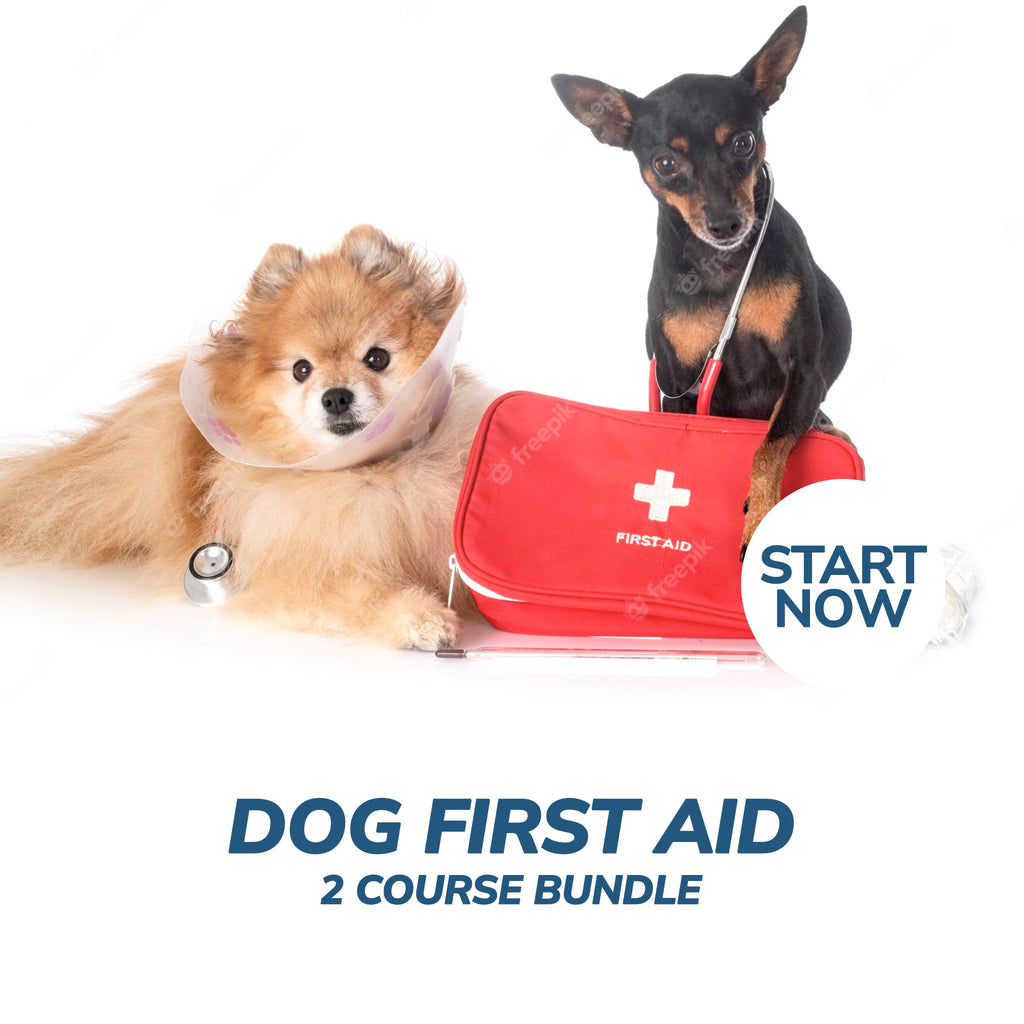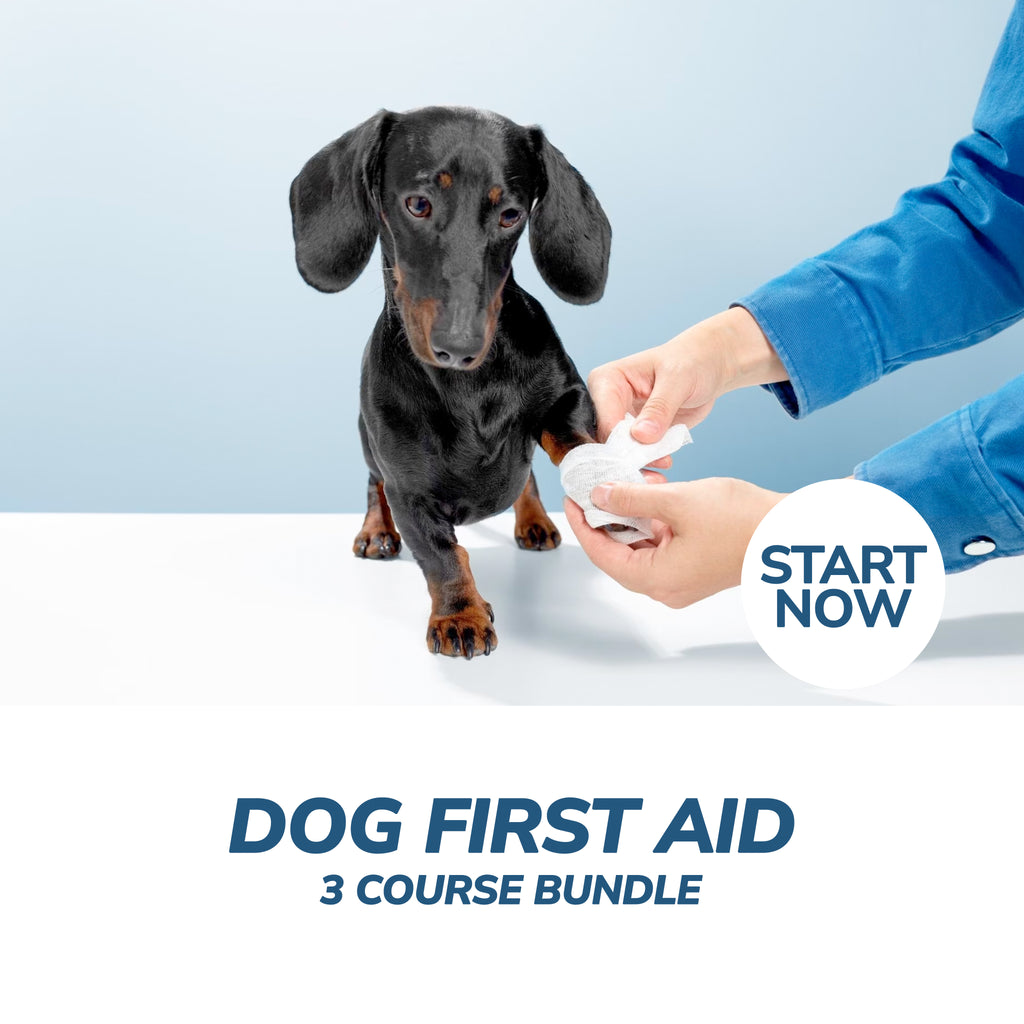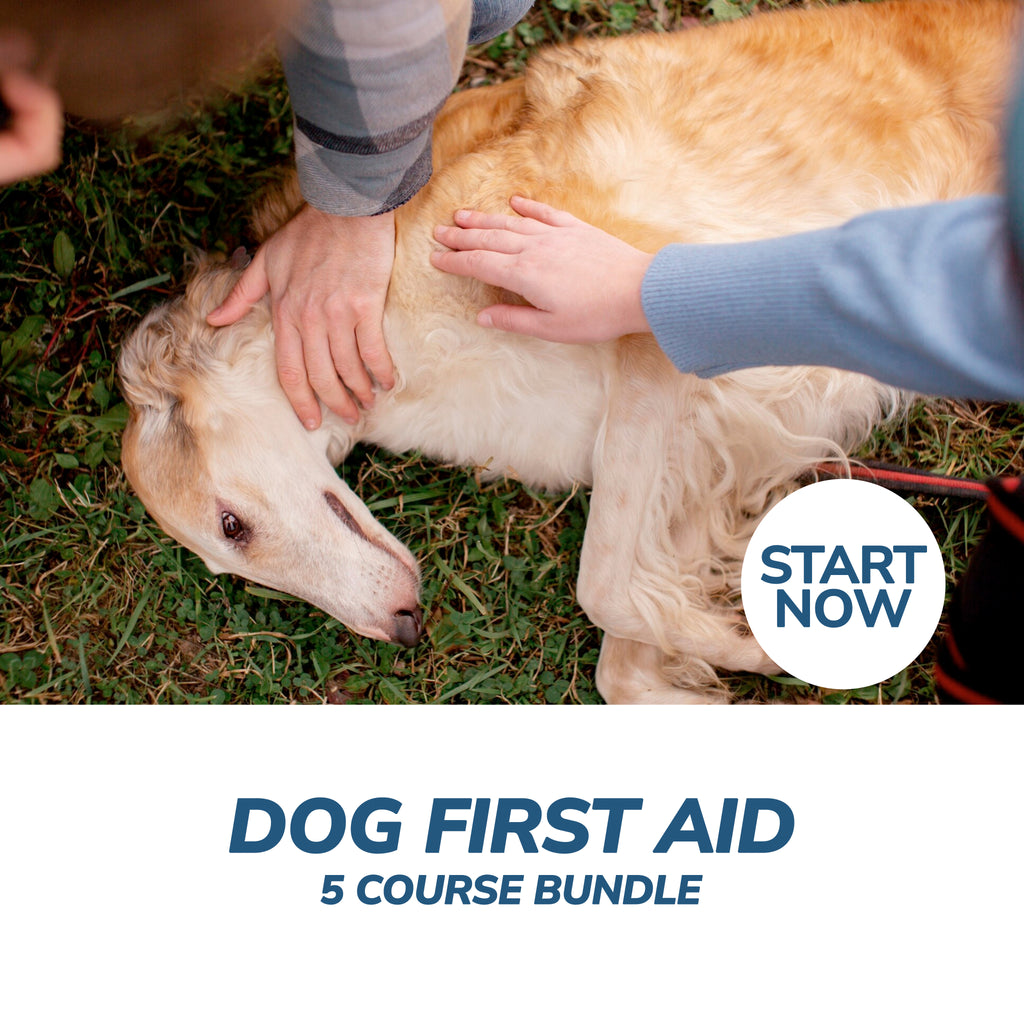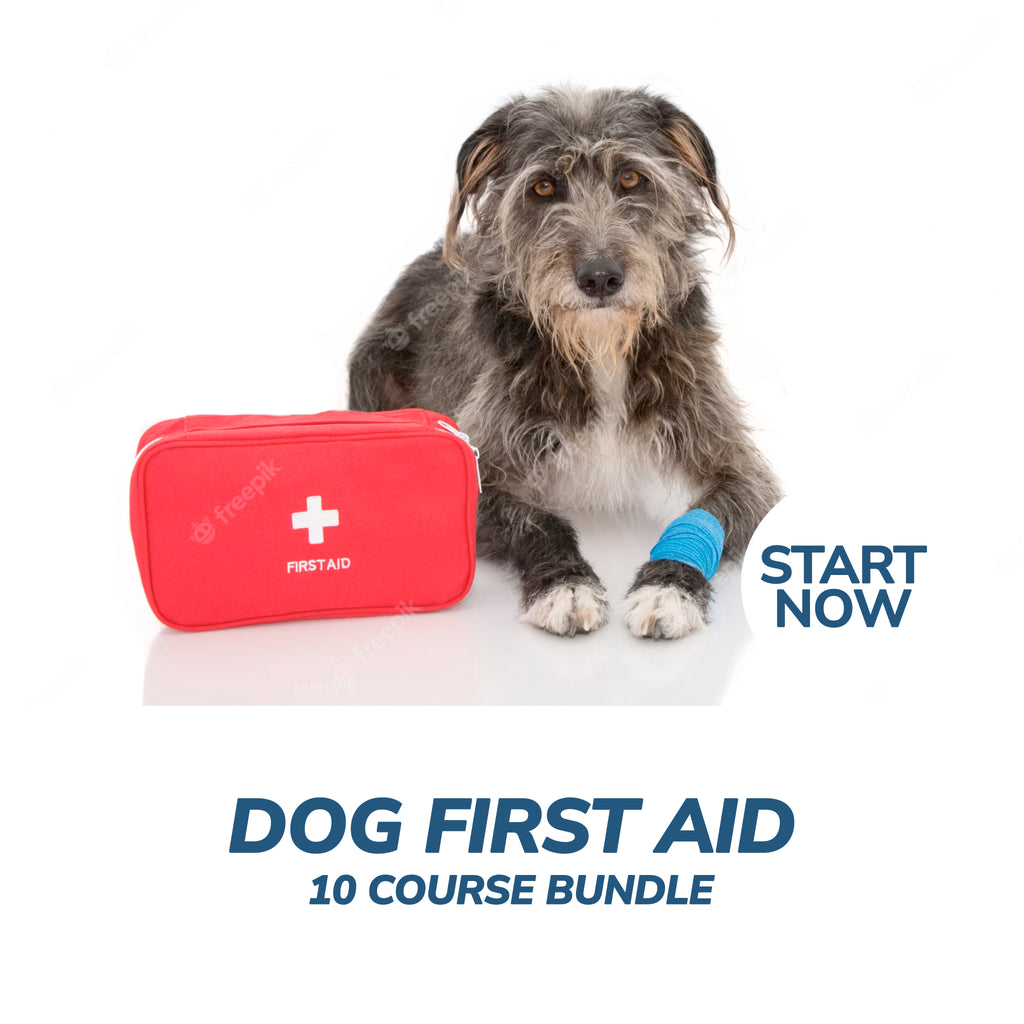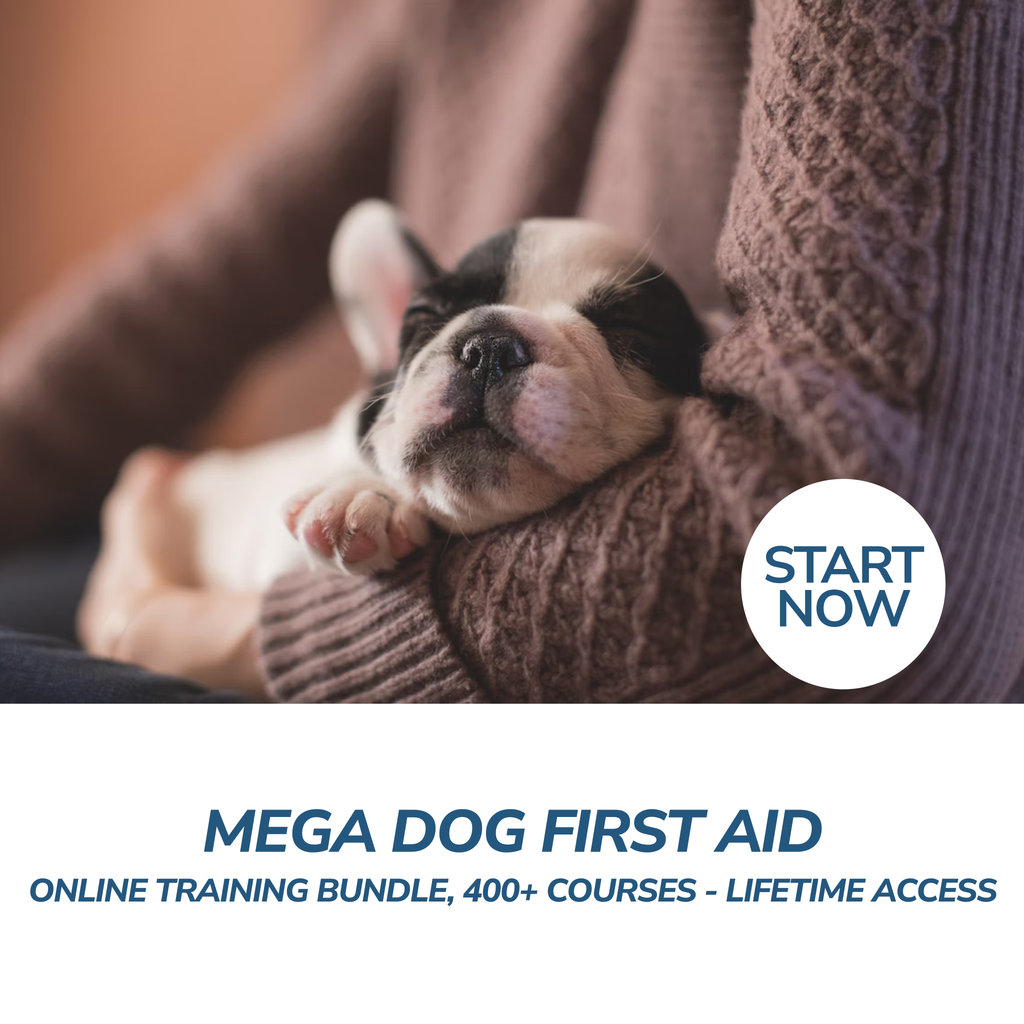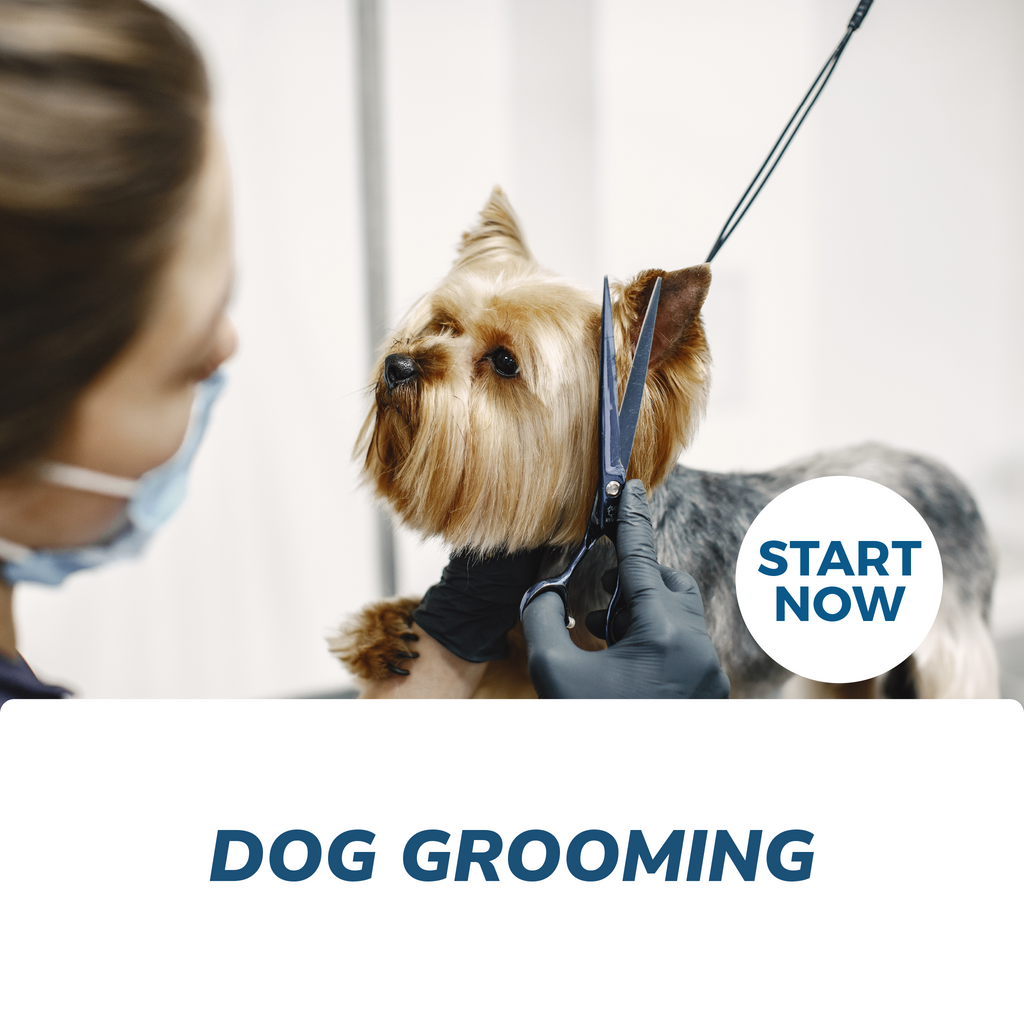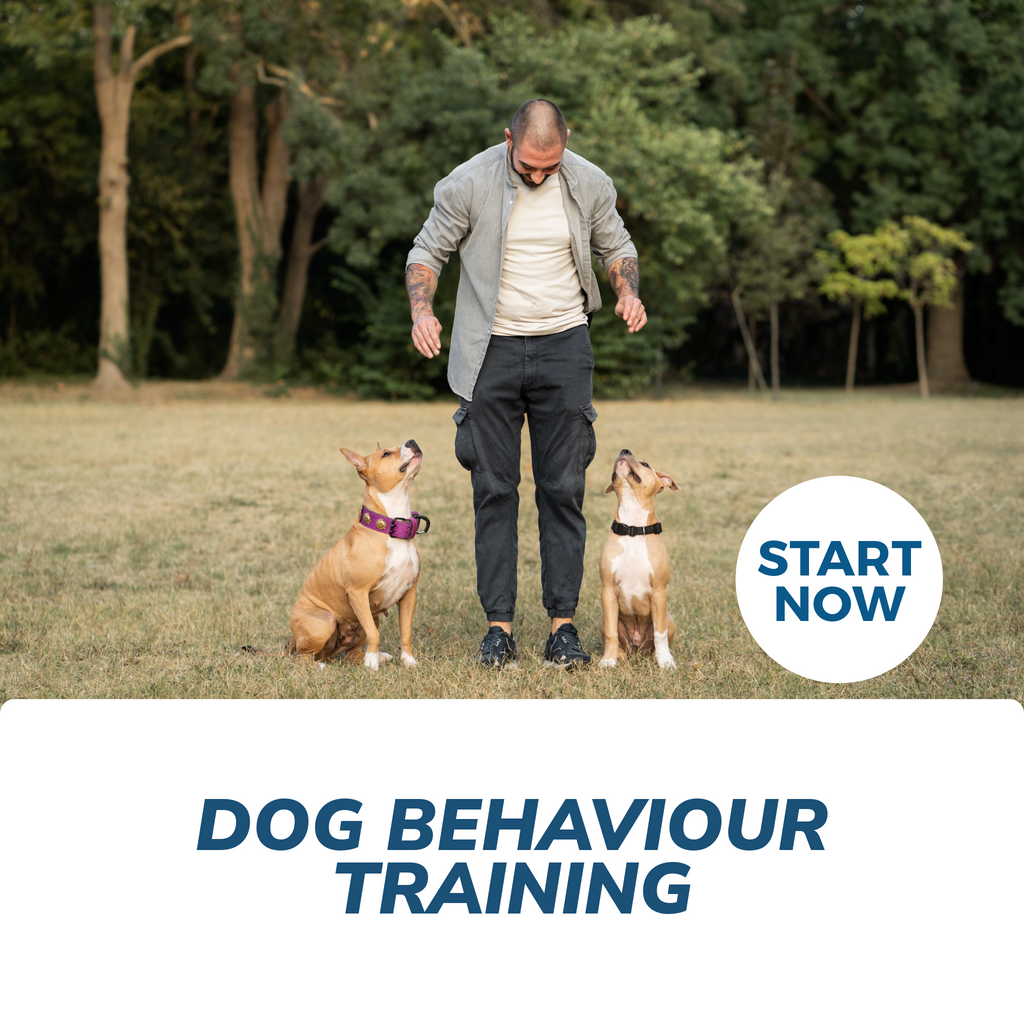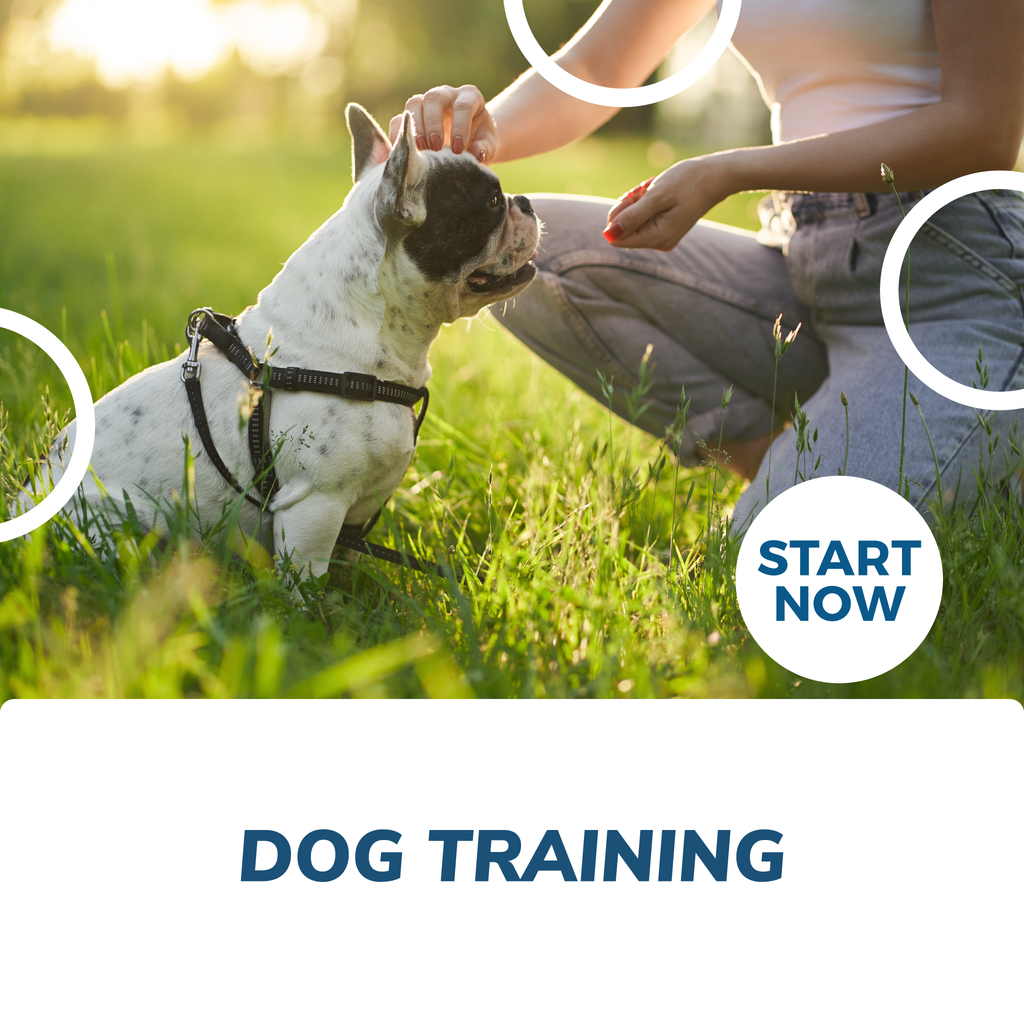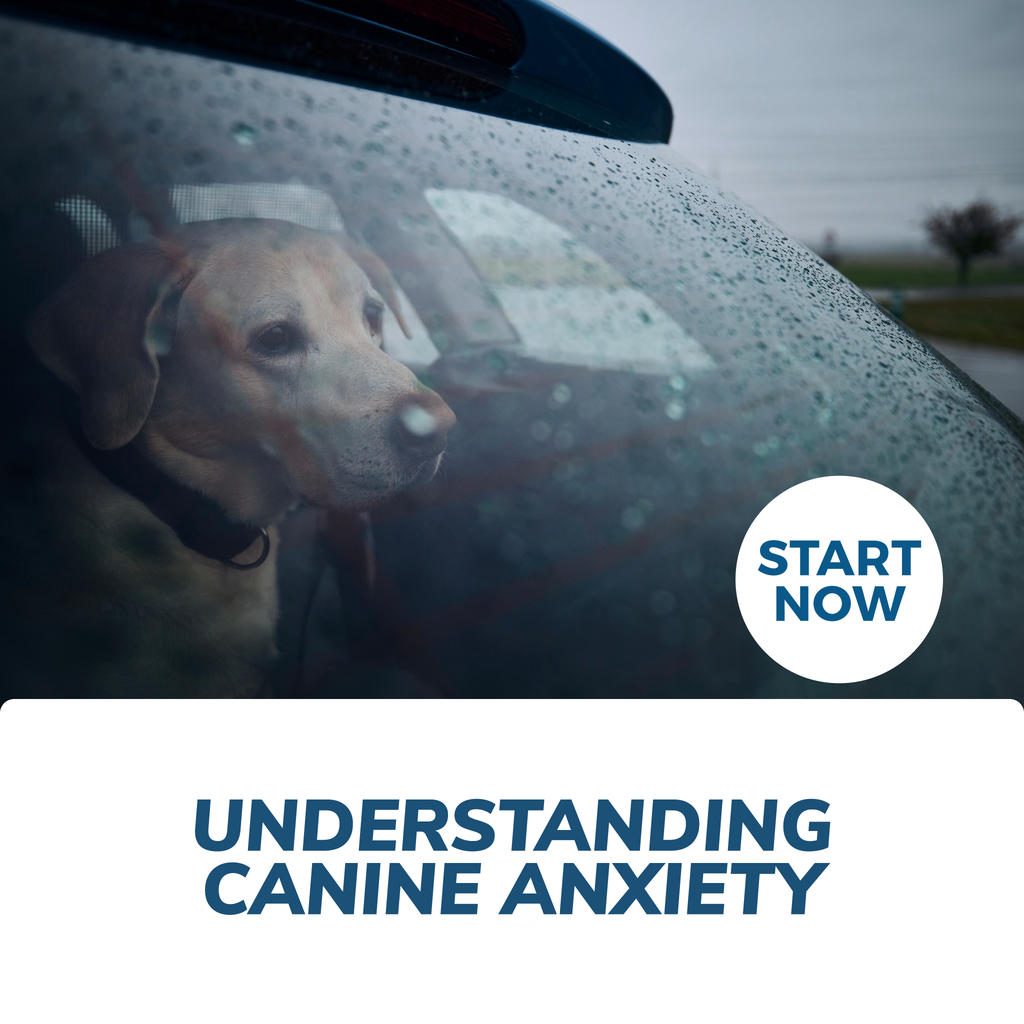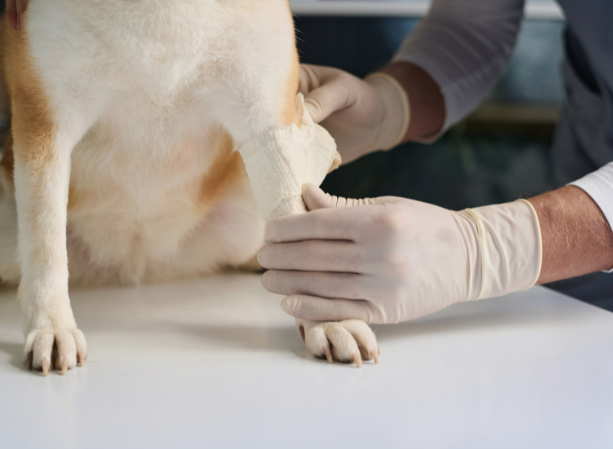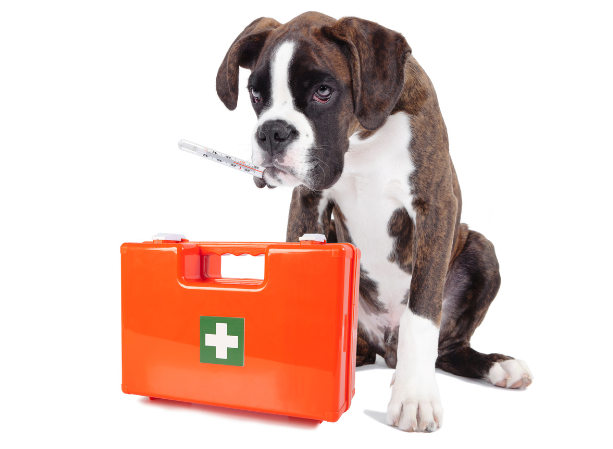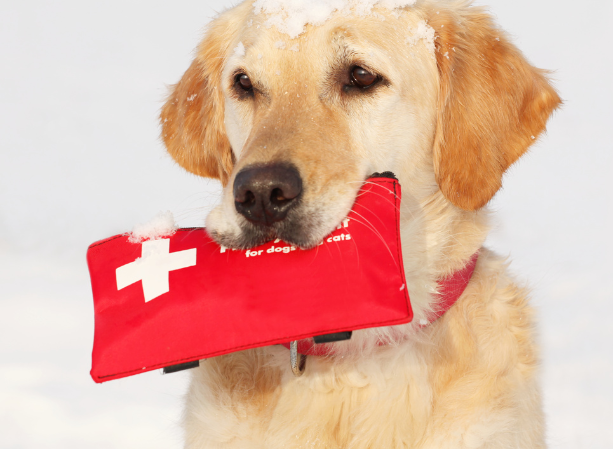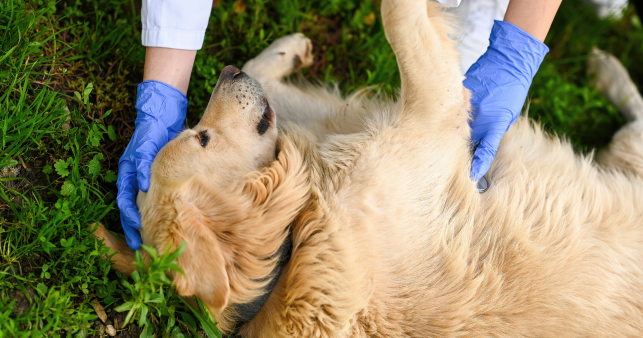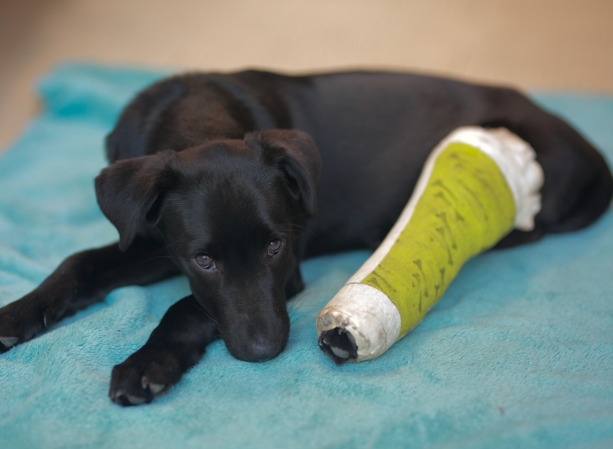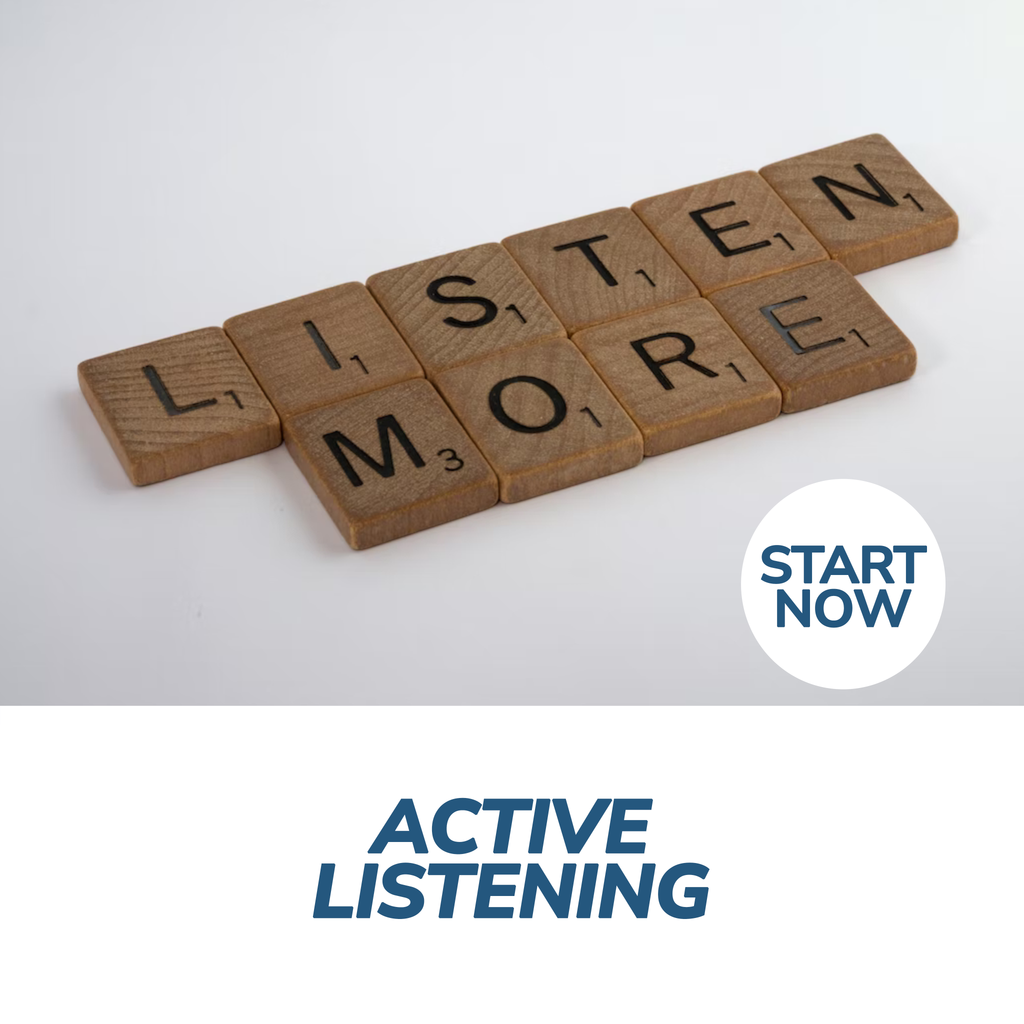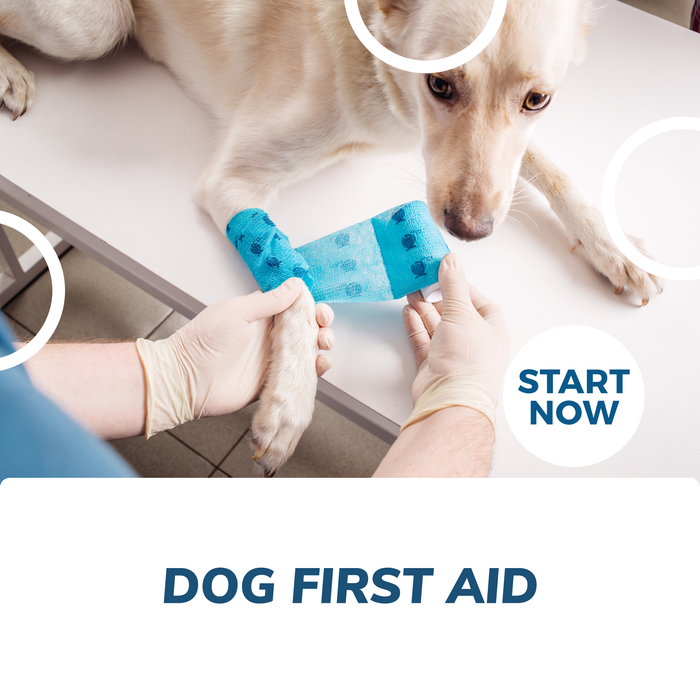
Course Summary
Certificate
Yes
Study at your own pace
Unlimited Lifetime
Online, Instant
Yes
30 Hours
12
build your own course bundle
Add any individual courses of your choice to your cart to create a custom bundle. You can purchase courses for yourself, multiple staff members, or even mix and match different courses. And enjoy an automatic discount of 30% to 75% at checkout, based on the total number of individual courses in your cart.
Dog First Aid Online Certificate Course
 Learn to identify and respond to common canine emergencies
Learn to identify and respond to common canine emergencies
 Gain skills to provide immediate care before professional help arrives
Gain skills to provide immediate care before professional help arrives
 Build confidence in ensuring your pet’s safety and well-being
Build confidence in ensuring your pet’s safety and well-being
 Learn to identify and respond to common canine emergencies
Learn to identify and respond to common canine emergencies
 Gain skills to provide immediate care before professional help arrives
Gain skills to provide immediate care before professional help arrives
 Build confidence in ensuring your pet’s safety and well-being
Build confidence in ensuring your pet’s safety and well-being
- Learn More & Save More - Learn advanced techniques and become an expert

7-Day Money-Back
Guarantee

52360+ Reviews From
Happy Learners

Certificate of
completion
About This Course
Enjoy these Benefits, keep your Dogs Safe and Learn How to Respond to Any Dog Emergency Today!
|
|
Study Dog First Aid Online Course and Learn How to Give Proper Emergency Care to your Dog
Our Dog First Aid Online Course will equip you with the training and knowledge to respond to dog emergencies. Approximately 90 percent of pets will have a medical emergency problem at some point in their lives, and more than half of all veterinary appointments are an emergency. Furthermore, for pre-senior dogs, preventable accidents are the primary cause of death.
Many people believe that transporting their dog to the veterinarian is their only option if it becomes ill or has an accident. Knowing what to do in an emergency, on the other hand, might be the difference between life and death, as well as purchase valuable time until veterinary help arrives. If you take our Dog First Aid Course, you will be prepared in the event of an emergency.
Benefits of Taking This Course
● Equipping you with the knowledge you need to attend dog first aid situations and be able to carry out quick and comprehensive assessments, apply first aid techniques and manage safety aspects carefully, the Dog First Aid Course is essential for every dog owner.
● Those who work with dogs and, in particular, those who care for others’ dogs, should know canine first aid. Primarily so you know what to do in an emergency but also to instil confidence in those who are using your services.
Who Should Complete This Course?
Do you consider yourself an experienced pet owner, animal care professional, or simply a dog enthusiast? Taking a pet CPR and first aid course may be the perfect way for you to further your knowledge and become better-equipped to deliver care for your furry companions. This type of training is especially important if you are a pet sitter, groomer, walker, or vet tech—all roles which involve looking after our beloved cats and dogs.
Elements discussed in pet CPR and first aid classes include:
· vital signs assessment such as temperature checks
· snout-to-tail examinations
· identifying common emergencies like Bee stings bites
· providing preventative care measures for cats and dogs
· recognizing heat stroke symptoms
· responding correctly in an emergency situation
· caring for children alongside cats and dogs
· basic dental care tips
· preparing first aid kits and supplies
· treating insect bites or scratches from nails on claws
All these topics teach the student how best to respond when confronted with sudden illnesses or ailments in their companion animals. They also learn techniques associated with delivering first aid while waiting for professional help if necessary.
Overall being trained in pet CPR and first aid provides great peace of mind not just to owners but also anyone responsible for providing regular animal care services. This course ensure all students are well-informed on how best to act should a medical emergency arise! It’s never too late (or too early) to look into getting certified – make sure to put safety first when it comes to caring after our beloved pets!
Dog First Aid Online Certificate Course – Requirements
This course is designed for people with little or no prior experience. The course is delivered 100 percent online 24/7 and only takes a few hours of study to complete.
To successfully complete this course, a student must:
● Have access to the internet and the necessary technical skills to navigate the online learning resources
● Have access to any mobile device with internet connectivity (laptop, desktop, tablet)
● Be a self-directed learner
● Possess sound language and literacy skills
Quick Course Facts:
Course content is structured for easy comprehension
Approximately 20 hours of study is needed to complete the course
Registered students gain unrestricted lifetime access to your online course
All course material is available online 24/7 and can be accessed using any device
Study your course online from anywhere in your own time at your own pace
All students who complete the course will be awarded with a certificate of completion that is applicable worldwide
For any additional questions please see our comprehensive FAQS tab above.
Canine First Aid Online Course Outline
Module 1: Introduction
This training on canine first aid is a great place to start. Our faithful friends are always there for us, and it is our responsibility to do the same for them. Educating ourselves on canine first aid is the first step toward curating a long and successful journey of health, wellness, and trust, whether you are a proud owner of a canine or someone who works with dogs professionally.
Defining Canine First Aid
Canine first aid is the medical attention given to an injured dog before seeking expert medical help. Canine first aid aims to respond to an injury or disease to treat pain, minimize harm, and help calm a distressed animal.
Anatomical Differences
Pet owners and those interested in learning more about first aid can help save a dog's life. Although canine first aid is quite similar to human first aid, there are a few anatomical variances that responders should be aware of.
Challenges in Canine Care
Some terrible obstacles exist when working with canine first aid. Injured dogs are more likely to become panicked, and some may even become aggressive in an emergency scenario.
Module 2: Canine Vital Signs
In Module 2, we will talk about vital canine signs and their importance in first aid. Many dog owners, handlers, and trainers can tell when a dog is feeling under the weather. The vital signs of a dog can reveal whether or not it is healthy. Knowing how to recognize typical vital signs and seek medical help is essential for canine first aid. This area of the course covers the vital signs of dogs, their typical ranges, the best methods for measuring them, and the factors that can change normal ranges.
Respiration
The most basic and most accessible vital sign to assess on a dog is his respiration rate. Count the breaths for 30 seconds and multiply by two to get your dog's respiratory rate. A dog's standard breathing rate is between 15 and 30 breaths per minute.
Body Temperature
Touching a dog's belly or nose will not give you an accurate reading of their body temperature. An accurate technique to check an animal's body temperature is to use a digital thermometer, which has the same general design as a human thermometer.
Mucous Membrane Color
The color of a dog's mucous membranes is another indicator of his general health. The gums are the most prevalent and visible mucosal membranes.
Heart Rate
Before you take your dog's pulse, make sure they are calm and silent. Feel for a heartbeat by placing your hand on the left side of the chest, just behind the elbow. A stethoscope can also be used if one is available.
Hydration
Dehydration is a severe ailment that might suggest abnormalities in a dog or just a lack of water intake. The average quantity of fluids in a dog's body is roughly 70% of its total body weight.
Module 3: Conducting an Assessment
In this segment of the course, we will assess a dog who may be suffering from a medical emergency. Canines can experience pain and suffering in a variety of ways. They could hint at it by changing their behaviour, such as becoming more aggressive or less cuddly than usual. These signals may be the only visible indications that a dog is in severe suffering.
Detecting Causes for Concern
If your dog is generally quite active but has suddenly turned sedentary, you should have them examined by a veterinarian. This is why it is crucial to understand a dog's essential attitude and lifestyle before concluding that his temperament has changed.
The Stoplight Method
The stoplight approach is a fantastic way to see if and when a dog needs to see a vet. In a potentially time-sensitive situation, the stoplight approach is a simple tool to remember. Green, yellow, and red are the three primary hues.
Distinguishing Symptoms
It might be difficult to tell the difference between symptoms and more severe diseases at times. Is a dog's severe thirst an acute condition that must be addressed or a symptom of something more serious? Consult a professional if you are unsure.
Module 4: Common Conditions
This module will go through some of the most frequent issues that can harm a dog's health. This will contain a quick rundown of many types of injuries and illnesses and respond to each. Although this is not an exhaustive list, it will serve as a starting point for dealing with various scopes, severity, and types of injuries.
Blood Loss
Blood loss is a potentially fatal disorder. As soon as you discover significant blood loss, it would help if you made plans to take yourself to a medical institution and analyze the injuries.
Burns and Scalds
If your dog suffers a burn or a scald, the first thing you should do is turn off the heat. You should apply cold water to the burn as quickly as possible and cover it with damp towels. An acidic material can cause some burns. If an acidic substance produced the burn, flush the burn with cold water for fifteen minutes before contacting a veterinarian for advice on what to do next.
Eye Injuries
A foreign body, such as hair, grass, or sticks, can cause injury to the eye. When an eye is injured, it is excruciating and might result in vision loss.
Seizures
A variety of factors can cause seizures in dogs. Toxic chemical exposure, epilepsy, and eclampsia are all common reasons.
Heat Stroke
When a dog is exposed to high temperatures, heatstroke can occur. When dogs are left inside a vehicle in hot weather without air conditioning or adequate ventilation, they are more likely to suffer heatstroke.
Module 5: Canine CPR
Cardiopulmonary resuscitation (CPR) can be conducted on dogs in the same way it is done on humans. Chest compressions with or without artificial breathing are used in CPR. CPR is an excellent technique that, when performed correctly, can save a dog's life in an emergency. Many people, however, are unsure when CPR should be used and when it should not.
Present Pulse
If you find an unconscious dog, you should start CPR right away. In this tense scenario, it is very typical to experience an adrenaline surge and decide without thinking.
Absent Pulse
You must perform CPR if a dog is not breathing and cannot feel or hear its heartbeat. This indicates that the dog's heart has stopped pumping oxygen throughout the body.
Performing CPR
Even persons trained to perform CPR on humans may struggle with canine CPR due to anatomical variations. As you read the next section, keep these anatomical differences in mind.
Module 6: Wounds and Bandages
We will talk about different types of wounds and bandages in Module 6. Dogs might get hurt when playing, working, or just walking around the house. A veterinarian must decide whether to seal or leave an open wound on a dog after treating it. If it is difficult to close the incision medically, the next best alternative is to leave it open and bandage it.
Bandages
Bandages protect the injured dogs from gnawing or licking the open wounds, in addition to allowing easy access to the wound. A bandage can be quickly removed to apply ointment topically while permitting drainage if an infection develops.
Using Bandages
To assure the wound's protection, bandages are applied in a step-by-step professional manner. A veterinarian or veterinary technician will bandage the wound once it has been thoroughly cleaned, with the assistance of an assistant who will keep the dog calm and immobile.
Techniques
A modified Robert Jones bandage is a temporary splint applied to a dog's fractured or wounded limb from the outside. On the other hand, a tie-over bandage is suitable for wounds with no local skin to cover them.
Types of Bandages
Sterile gauze is used to make adherent bandages. These bandages are designed to stick to the wound and debride it. Unfortunately, removing them is traumatic for the dogs since they also remove infected tissues.
Types of Wounds
Before establishing a treatment plan for the injured dog, veterinarians analyze the severity of the injury and the extent of the contamination. Open wounds and closed wounds are the two types of wounds that need to be treated differently.
Module 7: Canine Response to Acute Injury
Due to the stress of an acute injury, animals might react in unique ways during first-aid treatment. While it may approach and touch the dog calmly and with a soothing voice, it is still necessary to exercise caution to guarantee the safety of anyone aiding the animal.
Responder Safety
It is critical to ensure the safety of individuals who attend to an injured animal. Because the dog's behaviour can be unpredictable, you must remain vigilant at all times. Do not rush to approach the dog. Slowly approach the dog, keeping your body angled away from him and avoiding direct eye contact. This method will assist the dog to feel less threatened.
Muzzling
You can make one out of a rope, leash, sock, strap, or belt if you do not have a muzzle. You must draw the material firmly around the dog's muzzle after looping it around his muzzle to prevent the dog from biting. Never use tape or a sticky substance.
Wrapping
Wrapping a dog can also be used to restrict it. You can accomplish this with a towel or blanket. The dog must be allowed to breathe after being wrapped. Thus the head should be left open, and their trachea should not be compressed.
Immobilizing
If you fear the dog has suffered a spinal injury, you should carefully place them aboard. Before moving the dog, use splints or bandages to help stabilize their injuries.
Stages of Response
Fear or hostility may be displayed first, followed by a change in disposition as the dog's condition improves. Changes in a dog's degree of consciousness and discomfort can have a significant impact on his behaviour.
Shock
A full-body response to a significant stressor is known as systemic shock. A large loss of blood is the most typical cause.
Responding to Shock
If a dog appears to be in shock, you must ensure that they remain as quiet as possible. It is also crucial that they keep their bodies heat. Cover the dog with towels, blankets, or newspapers to achieve this.
Module 8: Pregnancy and Birth
The topic of pregnancy and birth will be covered in Module 8 of the course. Pregnancies in dogs last an average of 63 days, but they can last anywhere from 61 to 65 days. A bloated tummy will be the most noticeable indicator of pregnancy. Other warning indicators may have been less visible at the time. Once you have determined that an animal is pregnant, it is critical to stay watchful so that you can deal with any difficulties swiftly.
Conditions Affecting Pregnant Dogs
Several diseases can afflict dogs during or immediately after they give birth. Depending on the intensity of the symptoms, they may resolve independently or require expert medical attention.
Preeclampsia
Preeclampsia is a life-threatening disorder that can occur during pregnancy. The calcium in the mother's blood reduces to dangerously low levels due to the developing fetus drawing calcium from the dog's supply.
Gestational Diabetes
Gestational diabetes is caused by a shortage of insulin in the mother's body during pregnancy. Excessive urination, excessive drinking, acute tiredness, and weight loss are all symptoms.
Mastitis
Mastitis is a painful inflammation or infection of the mammary glands that usually develops within the first two weeks of a puppy's life. The teats of the mother will harden and swell. The dog may also get drowsy and display symptoms of fever, dehydration, and a loss of appetite.
Retained Placenta
After doing testing, your veterinarian may prescribe medication such as oxytocin. Surgery may be required in extreme circumstances.
Conditions Affecting Newborn Puppies
Because pups are so young, they are susceptible to a variety of illnesses. Some of these conditions are curable and relatively frequent. Others may lead to death.
Canine Parvovirus
Parvovirus causes difficulty breathing, diarrhea, vomiting, and dehydration, and it is fatal. Although a vaccine exists, it is usually administered when puppies are 14 weeks old. As a result, newborn puppies are at risk.
Parasites
Fleas, ticks, and parasitic worms, normally harmless to adult dogs, can be fatal to puppies. A parasite infestation can swiftly deplete a puppy's blood supply and poison its system.
Module 9: Transporting Animals in Emergencies
In Module 9, we will go through how to evacuate an injured or unwell animal in a medical emergency. If an animal is injured, you may need to relocate them to receive additional medical attention from a veterinarian. When this occurs, the animal's safety and the person(s) transporting the animal must be prioritized. The following is a rundown of best practices for accomplishing the work and tips on when it is preferable not to move an animal.
Keeping Calm
Pain, fear, and other conditions can drive animals to react in unanticipated and sometimes deadly ways.
Preparing for Transport
Transporting your animal safely helps to avoid more injuries on the way to your destination. When it comes to dogs, a muzzle should be worn over the nose and mouth whenever possible.
Remaining in Place
Of course, there are situations when moving an injured animal is inappropriate, especially if doing so will endanger the animal or put you at risk. In such cases, it is essential to contact a veterinarian to devise a reaction strategy.
Module 10: First Aid Kits
We will talk about first aid kits in Module 10 and why they are necessary for everyone who owns or works with dogs. A dog's nature might make it highly prone to injuries, accidents, and other health problems. Premade kits may be available for purchase at some retailers and sellers. In some cases, assembling a kit yourself may be preferable to ensure that you are familiar with each item and that the contents are matched to your personal needs.
Contents
First-aid kits can prepare you to deal with a wide range of injuries and illnesses. First and foremost, emergency phone information for animal poison control and neighbouring emergency veterinarians should be included in canine first aid kits.
Protective Equipment
As previously stated, a muzzle can always protect a responder from being bitten by a canine receiving first aid. Other physical risks, on the other hand, can put the responder in danger.
Storing Kits
Although canine first aid kits should be kept out of the reach of youngsters, they should always be available in the event of an emergency. It has been recommended to keep all of your first-aid materials in a bag or other container so that you can get them quickly.
Module 11: Preventing Injury and Illness
We will talk about how to avoid injury and illness in this segment of the course. While most of these methods aim to prevent crime in the house, the same concepts can be used in commercial buildings.
Assessing the Environment
Consider the following best practices when analyzing your environment if you have a dog at home or deal with dogs professionally. Medications, sharp instruments, cleansers, and chemicals should all be kept out of reach of dogs. The same can be said for any hazardous or toxic substances.
Size
Although this is a contentious topic on which each dog parent has an opinion, research and surveys suggest that your dog's size has a substantial impact on their stress levels. Size can influence how you prevent injury and disease in some circumstances.
Module 12: Emergency Response Plans
Welcome to the course's last module. When living or working with dogs, unexpected events and minor mishaps are unavoidable. The only sensible answer is to prepare an emergency reaction plan ahead of time to keep yourself and the animals in your care safe.
Elements of an Effective Plan
An efficient emergency response plan should be tailored to your specific needs, circumstances, and surroundings.
Redundancy
Consider preparing redundant preparations if you do not know who will be available in the event of an emergency. For example, if you have an ailing dog, you might have a plan in place during the daytime that involves a neighbour stepping in to check on the dog while you are at work.
Recognition & Accreditation
Upon successful completion of this course and achieving a passing score for the assessment, you will be issued with an international continuing education credit (CEU) certificate.
This Certificate is applicable worldwide, which demonstrates your commitment to learning new skills. You can share the certificate with your friends, relatives, co-workers, and potential employers. Also, include it in your resume/CV, professional social media profiles and job applications.
Units of Study
Unit 1: Introduction
- Define canine first aid
- Difference between first aid and more advanced forms of care
Unit 2: Vitals
- Canine vital signs
Unit 3: Conducting an Assessment
- Signs of injury and disease in dogs
- When to consult a vet
- How pain presents
Unit 4: Common Conditions
- Review each condition
- Actions to take for each
Unit 5: Canine CPR
- When to perform CPR
- Basic overview of steps
Unit 6: Wounds and Bandages
- When bandages may be appropriate
- Best ways to use bandages
- Techniques to apply
- Types of bandages
- Types of wounds
Unit 7: Canine Response to Acute Injury
- How dogs respond to acute injuries
- Emphasize need for responder safety
- Shock
- Hemorrhage
- Mental status changes
Unit 8: Pregnancy and Birth
- Conditions that can present in pregnancy and birth
- Conditions that can affect newborn puppies
Unit 9: Transporting Animals in Emergencies
- Recommendations to safely transport injured/ill animals
- How to keep animals secure
- When to avoid moving an animal
Unit 10: First Aid Kits
- Contents of canine first aid kit
- Protective equipment that responder will need
- Best way to store contents
Unit 11: Preventing Injury and Illness
- How to assess homes and cars for hazards
- Adjusting prevention plan based on size/demeanor of dogs
- Car safety
Unit 12: Emergency Response Plan
- Importance of developing an emergency response plan
- Elements of an emergency response plan for pet owners
Requirements
Entry requirements
Students must have basic literacy and numeracy skills.
Minimum education
Open entry. Previous schooling and academic achievements are not required for entry into this course.
Computer requirements
Students will need access to a computer and the internet.
Minimum specifications for the computer are:
Windows:
Microsoft Windows XP, or laterModern and up to date Browser (Internet Explorer 8 or later, Firefox, Chrome, Safari)
MAC/iOS
OSX/iOS 6 or laterModern and up to date Browser (Firefox, Chrome, Safari)
All systems
Internet bandwidth of 1Mb or fasterFlash player or a browser with HTML5 video capabilities(Currently Internet Explorer 9, Firefox, Chrome, Safari)
Students will also need access the following applications:
Adobe Acrobat Reader
Requirements
Entry requirements:
Students must have basic literacy and numeracy skills.
Minimum education:
Open entry. Previous schooling and academic achievements are not required for entry into this course.
Device requirements:
Students will need access to a computer/any device and the internet.
FAQS
1. Who are Courses For Success?
Courses For Success is a course platform that started in 2008
with 5 courses, since then we have grown to over 10,000 online courses.
Our courses span across the following categories:
•Animal
•Beauty
•Business
•Health & Fitness
•Finance
•Lifestyle
•IT & Software
•Personal Development
•Teaching & Academics
2. Is there a refund/cancellation policy?
Yes, we have a 7-day money-back refund policy.
3. What is the FREE Personal Success Training Program?
The Personal Success Training Program
was developed by Courses For Success to help our customers achieve
success. Currently, we are offering this program for FREE with every
course or bundle purchase this month. This is a limited time offer!
4. Are there any requirements to study this course?
No,
anyone who has an interest in learning more about this subject matter
is encouraged to take our course. There are no entry requirements to
take this course.
5. Do I require to have finished high school to complete this course?
No,
you do not require a High School Diploma or to have finished school to
study this course, this course is open to anyone who would like to take
this course.
6. What if English is not my first language?
This
course is provided in English, however, due to the digital nature of
our training, you can take your time studying the material and make use
of tools such as google translate and Grammarly.
7. Is this course online or conducted in person?
All our courses are accessible online on any device. You may complete them at your own pace and at your own time.
8. How do I receive my course?
After
you have completed the payment, you will receive a confirmation email
and tax receipt. You will also receive an email containing your course
login details (username and password), as well as instructions on how to
access and log in to your course via the internet with any device,
please check your junk/spam folder in the event that you do not receive
the email.
9. When does this course start?
Providing
you have internet access you can start this course whenever you like,
just go to the login page and insert your username and password and you
can access the online material.
10. What is online learning like?
Online learning is easy, if not easier than a traditional academic situation.
By studying an online course, the usual boundaries caused by location and time constraints are eliminated, meaning you are free to study where and when you want at your own pace.
Of course, you will need to be able to self-manage your time and be organized, but with our help, you’ll soon find yourself settling into a comfortable rhythm of study.
11. What computer skills do I need for my course?
You
don't need to be a computer expert to succeed with our online training,
but you should be comfortable typing, using the internet and be capable
of using common software (such as Microsoft word).
12. How long will you have access to the online course?
The majority of our courses have unlimited lifetime access, meaning you can access this course whenever you want.
Please also check the course summary, as a small selection of courses have limited access.
13. How long will my course take?
Course duration, is listed under Course Summary
14. Do I need to buy textbooks?
All the required material for your course is included in the online system, you do not need to buy anything else.
15. Is the course interactive?
Yes, all our courses are interactive.
16. Is there an assessment or exam?
Yes,
you will be required to complete a multiple-choice test online at the
end of your course, you can do this test as many times as you require.
17. What type of certificate will I receive?
You
will receive a Certificate of Completion that is applicable worldwide,
which demonstrates your commitment to learning new skills. You can share
the certificate with your friends, relatives, co-workers and employers.
Also, include it in your resume/CV, professional social media profiles
and job applications.
Wendy Sue Hunt - 5 STAR REVIEW
"If you are considering taking any “Courses for Success”, I would highly recommend it. I have always been a firm believer it’s important to always sharpen your skills. You are never too old to learn more. I found the courses very helpful, interesting and easy to understand.
The term “Courses for Success” helped me in my current position to succeed. After completing the courses, I gave my manager the completion certificates. Recently I received a promotion too."
Valencia Marie Aviles - 5 STAR REVIEW
"I
had a very good experience with my course. It has helped me to get
multiple jobs and prepared me for almost everything I would need to
know. The course was very informative and easy to understand and broken
up perfectly to be done in a short amount of time while still learning a
good amount! I would recommend Courses for Success to anyone trying to
get abs certifications for job advancements, it is well worth it!"
ELENA GRIFFIN - 5 STAR REVIEW
"I have absolutely enjoyed the materials from Courses for Success. The materials are easy to understand which makes learning enjoyable. Courses for Success have great topics of interest which make you come back for
more.
Thank you Courses for Success for being part of my learning journey and making education affordable!"
Our
completion certificates are very valuable and will help you progress in
your work environment and show employers how committed you are to learn
new skills, you might even get a promotion.
18. Will this course be credited by universities?
No, it is not equivalent to a college or university credit.
19. Am I guaranteed to get a job with this certificate?
This course will give you the skills you need to help you obtain employment, but it’s up to you if you get the job or not.
20. How will this course assist me with my career?
Studying
and completing this course will show employers that you have the
knowledge in this field, additionally you will gain more confidence in
this area of expertise.
21. How long is the certificate valid for?
The Certificates are valid for life and do not need renewing.
22. Can I take more than one course at a time?
Courses
are studied online at your own pace and you are free to study as many
or as few courses as you wish, we also offer online course bundles that
allow you to save on additional courses so that you may get all the
topics related to your training goals in one go.
23. What are the Payment Methods available? Is there a payment plan?
We accept payments via PayPal, Credit Card and Bank Transfer.
Payment Plans: We have partnered with Partial.ly, to offer our own in house payment plan. Everyone is Pre-Approved, providing the initial deposit is paid in full.
To pay via bank transfer contact us info@coursesforsuccess.com
24. Can I purchase for multiple people?
Yes, you can do this by purchasing individually via website or send us a request via email at info@coursesforsuccess.com
25. Can I request for an invoice before purchase?
Yes, you can request for an invoice via email at info@coursesforsuccess.com
26. Purchase for a gift?
Yes, you can purchase this course as a gift, simply send an email to info@coursesforsuccess.com, with the course details and we can accommodate this.
27. Can I create my own course bundle?
Yes,
you can customize your own bundle. Please send us the complete list
with the exact course link of the courses you'd like to bundle up via
email info@coursesforsuccess.com and we will create them for you. *Each course access, time of completion and certification varies depending on the course type.
28. How will I contact Courses For Success if I have any questions?
You can contact our support team, at any time through live chat on our website, or email at info@coursesforsuccess.com, or by calling one of our phone numbers depending on which country you are in.
SANTA DISCOUNTS & FREE UPGRADES - OFFER ENDS MIDNIGHT TODAY!
SAVE BIG ON COURSES & EVEN BIGGER ON BUNDLES - PLUS GET A FREE UPGRADE TO THE NEXT BUNDLE - HURRY DISCOUNTS ENDS MIDNIGHT TODAY!
Save Big:
- INDIVIDUAL COURSES - SAVE UP TO 50% + FREE UPGRADE TO 2 COURSE BUNDLE
- 2 COURSE BUNDLE - SAVE UP TO 81% + FREE UPGRADE TO 3 COURSE BUNDLE
- 3 COURSE BUNDLE - SAVE UP TO 85% + FREE UPGRADE TO 5 COURSE BUNDLE
- 5 COURSE BUNDLE - SAVE UP TO 89% + FREE UPGRADE TO 10 COURSE BUNDLE
- 10 COURSE BUNDLE - SAVE UP TO 91%
THE MORE YOU BUY THE MORE YOU SAVE
OR BUY THE MEGA BUNDLE & SAVE 97%
The Mega Bundle provides lifetime access to 400 plus courses – equip yourself with the skills you need – invest in your future today!
BUILD YOUR OWN BUNDLE & SAVE 30%-75%
In addition, we also enable you to select your own courses and add these to your own bundle whereby the more you add the more you save.
About This Course
Enjoy these Benefits, keep your Dogs Safe and Learn How to Respond to Any Dog Emergency Today!
|
|
Study Dog First Aid Online Course and Learn How to Give Proper Emergency Care to your Dog
Our Dog First Aid Online Course will equip you with the training and knowledge to respond to dog emergencies. Approximately 90 percent of pets will have a medical emergency problem at some point in their lives, and more than half of all veterinary appointments are an emergency. Furthermore, for pre-senior dogs, preventable accidents are the primary cause of death.
Many people believe that transporting their dog to the veterinarian is their only option if it becomes ill or has an accident. Knowing what to do in an emergency, on the other hand, might be the difference between life and death, as well as purchase valuable time until veterinary help arrives. If you take our Dog First Aid Course, you will be prepared in the event of an emergency.
Benefits of Taking This Course
● Equipping you with the knowledge you need to attend dog first aid situations and be able to carry out quick and comprehensive assessments, apply first aid techniques and manage safety aspects carefully, the Dog First Aid Course is essential for every dog owner.
● Those who work with dogs and, in particular, those who care for others’ dogs, should know canine first aid. Primarily so you know what to do in an emergency but also to instil confidence in those who are using your services.
Who Should Complete This Course?
Do you consider yourself an experienced pet owner, animal care professional, or simply a dog enthusiast? Taking a pet CPR and first aid course may be the perfect way for you to further your knowledge and become better-equipped to deliver care for your furry companions. This type of training is especially important if you are a pet sitter, groomer, walker, or vet tech—all roles which involve looking after our beloved cats and dogs.
Elements discussed in pet CPR and first aid classes include:
· vital signs assessment such as temperature checks
· snout-to-tail examinations
· identifying common emergencies like Bee stings bites
· providing preventative care measures for cats and dogs
· recognizing heat stroke symptoms
· responding correctly in an emergency situation
· caring for children alongside cats and dogs
· basic dental care tips
· preparing first aid kits and supplies
· treating insect bites or scratches from nails on claws
All these topics teach the student how best to respond when confronted with sudden illnesses or ailments in their companion animals. They also learn techniques associated with delivering first aid while waiting for professional help if necessary.
Overall being trained in pet CPR and first aid provides great peace of mind not just to owners but also anyone responsible for providing regular animal care services. This course ensure all students are well-informed on how best to act should a medical emergency arise! It’s never too late (or too early) to look into getting certified – make sure to put safety first when it comes to caring after our beloved pets!
Dog First Aid Online Certificate Course – Requirements
This course is designed for people with little or no prior experience. The course is delivered 100 percent online 24/7 and only takes a few hours of study to complete.
To successfully complete this course, a student must:
● Have access to the internet and the necessary technical skills to navigate the online learning resources
● Have access to any mobile device with internet connectivity (laptop, desktop, tablet)
● Be a self-directed learner
● Possess sound language and literacy skills
Quick Course Facts:
Course content is structured for easy comprehension
Approximately 20 hours of study is needed to complete the course
Registered students gain unrestricted lifetime access to your online course
All course material is available online 24/7 and can be accessed using any device
Study your course online from anywhere in your own time at your own pace
All students who complete the course will be awarded with a certificate of completion that is applicable worldwide
For any additional questions please see our comprehensive FAQS tab above.
Canine First Aid Online Course Outline
Module 1: Introduction
This training on canine first aid is a great place to start. Our faithful friends are always there for us, and it is our responsibility to do the same for them. Educating ourselves on canine first aid is the first step toward curating a long and successful journey of health, wellness, and trust, whether you are a proud owner of a canine or someone who works with dogs professionally.
Defining Canine First Aid
Canine first aid is the medical attention given to an injured dog before seeking expert medical help. Canine first aid aims to respond to an injury or disease to treat pain, minimize harm, and help calm a distressed animal.
Anatomical Differences
Pet owners and those interested in learning more about first aid can help save a dog's life. Although canine first aid is quite similar to human first aid, there are a few anatomical variances that responders should be aware of.
Challenges in Canine Care
Some terrible obstacles exist when working with canine first aid. Injured dogs are more likely to become panicked, and some may even become aggressive in an emergency scenario.
Module 2: Canine Vital Signs
In Module 2, we will talk about vital canine signs and their importance in first aid. Many dog owners, handlers, and trainers can tell when a dog is feeling under the weather. The vital signs of a dog can reveal whether or not it is healthy. Knowing how to recognize typical vital signs and seek medical help is essential for canine first aid. This area of the course covers the vital signs of dogs, their typical ranges, the best methods for measuring them, and the factors that can change normal ranges.
Respiration
The most basic and most accessible vital sign to assess on a dog is his respiration rate. Count the breaths for 30 seconds and multiply by two to get your dog's respiratory rate. A dog's standard breathing rate is between 15 and 30 breaths per minute.
Body Temperature
Touching a dog's belly or nose will not give you an accurate reading of their body temperature. An accurate technique to check an animal's body temperature is to use a digital thermometer, which has the same general design as a human thermometer.
Mucous Membrane Color
The color of a dog's mucous membranes is another indicator of his general health. The gums are the most prevalent and visible mucosal membranes.
Heart Rate
Before you take your dog's pulse, make sure they are calm and silent. Feel for a heartbeat by placing your hand on the left side of the chest, just behind the elbow. A stethoscope can also be used if one is available.
Hydration
Dehydration is a severe ailment that might suggest abnormalities in a dog or just a lack of water intake. The average quantity of fluids in a dog's body is roughly 70% of its total body weight.
Module 3: Conducting an Assessment
In this segment of the course, we will assess a dog who may be suffering from a medical emergency. Canines can experience pain and suffering in a variety of ways. They could hint at it by changing their behaviour, such as becoming more aggressive or less cuddly than usual. These signals may be the only visible indications that a dog is in severe suffering.
Detecting Causes for Concern
If your dog is generally quite active but has suddenly turned sedentary, you should have them examined by a veterinarian. This is why it is crucial to understand a dog's essential attitude and lifestyle before concluding that his temperament has changed.
The Stoplight Method
The stoplight approach is a fantastic way to see if and when a dog needs to see a vet. In a potentially time-sensitive situation, the stoplight approach is a simple tool to remember. Green, yellow, and red are the three primary hues.
Distinguishing Symptoms
It might be difficult to tell the difference between symptoms and more severe diseases at times. Is a dog's severe thirst an acute condition that must be addressed or a symptom of something more serious? Consult a professional if you are unsure.
Module 4: Common Conditions
This module will go through some of the most frequent issues that can harm a dog's health. This will contain a quick rundown of many types of injuries and illnesses and respond to each. Although this is not an exhaustive list, it will serve as a starting point for dealing with various scopes, severity, and types of injuries.
Blood Loss
Blood loss is a potentially fatal disorder. As soon as you discover significant blood loss, it would help if you made plans to take yourself to a medical institution and analyze the injuries.
Burns and Scalds
If your dog suffers a burn or a scald, the first thing you should do is turn off the heat. You should apply cold water to the burn as quickly as possible and cover it with damp towels. An acidic material can cause some burns. If an acidic substance produced the burn, flush the burn with cold water for fifteen minutes before contacting a veterinarian for advice on what to do next.
Eye Injuries
A foreign body, such as hair, grass, or sticks, can cause injury to the eye. When an eye is injured, it is excruciating and might result in vision loss.
Seizures
A variety of factors can cause seizures in dogs. Toxic chemical exposure, epilepsy, and eclampsia are all common reasons.
Heat Stroke
When a dog is exposed to high temperatures, heatstroke can occur. When dogs are left inside a vehicle in hot weather without air conditioning or adequate ventilation, they are more likely to suffer heatstroke.
Module 5: Canine CPR
Cardiopulmonary resuscitation (CPR) can be conducted on dogs in the same way it is done on humans. Chest compressions with or without artificial breathing are used in CPR. CPR is an excellent technique that, when performed correctly, can save a dog's life in an emergency. Many people, however, are unsure when CPR should be used and when it should not.
Present Pulse
If you find an unconscious dog, you should start CPR right away. In this tense scenario, it is very typical to experience an adrenaline surge and decide without thinking.
Absent Pulse
You must perform CPR if a dog is not breathing and cannot feel or hear its heartbeat. This indicates that the dog's heart has stopped pumping oxygen throughout the body.
Performing CPR
Even persons trained to perform CPR on humans may struggle with canine CPR due to anatomical variations. As you read the next section, keep these anatomical differences in mind.
Module 6: Wounds and Bandages
We will talk about different types of wounds and bandages in Module 6. Dogs might get hurt when playing, working, or just walking around the house. A veterinarian must decide whether to seal or leave an open wound on a dog after treating it. If it is difficult to close the incision medically, the next best alternative is to leave it open and bandage it.
Bandages
Bandages protect the injured dogs from gnawing or licking the open wounds, in addition to allowing easy access to the wound. A bandage can be quickly removed to apply ointment topically while permitting drainage if an infection develops.
Using Bandages
To assure the wound's protection, bandages are applied in a step-by-step professional manner. A veterinarian or veterinary technician will bandage the wound once it has been thoroughly cleaned, with the assistance of an assistant who will keep the dog calm and immobile.
Techniques
A modified Robert Jones bandage is a temporary splint applied to a dog's fractured or wounded limb from the outside. On the other hand, a tie-over bandage is suitable for wounds with no local skin to cover them.
Types of Bandages
Sterile gauze is used to make adherent bandages. These bandages are designed to stick to the wound and debride it. Unfortunately, removing them is traumatic for the dogs since they also remove infected tissues.
Types of Wounds
Before establishing a treatment plan for the injured dog, veterinarians analyze the severity of the injury and the extent of the contamination. Open wounds and closed wounds are the two types of wounds that need to be treated differently.
Module 7: Canine Response to Acute Injury
Due to the stress of an acute injury, animals might react in unique ways during first-aid treatment. While it may approach and touch the dog calmly and with a soothing voice, it is still necessary to exercise caution to guarantee the safety of anyone aiding the animal.
Responder Safety
It is critical to ensure the safety of individuals who attend to an injured animal. Because the dog's behaviour can be unpredictable, you must remain vigilant at all times. Do not rush to approach the dog. Slowly approach the dog, keeping your body angled away from him and avoiding direct eye contact. This method will assist the dog to feel less threatened.
Muzzling
You can make one out of a rope, leash, sock, strap, or belt if you do not have a muzzle. You must draw the material firmly around the dog's muzzle after looping it around his muzzle to prevent the dog from biting. Never use tape or a sticky substance.
Wrapping
Wrapping a dog can also be used to restrict it. You can accomplish this with a towel or blanket. The dog must be allowed to breathe after being wrapped. Thus the head should be left open, and their trachea should not be compressed.
Immobilizing
If you fear the dog has suffered a spinal injury, you should carefully place them aboard. Before moving the dog, use splints or bandages to help stabilize their injuries.
Stages of Response
Fear or hostility may be displayed first, followed by a change in disposition as the dog's condition improves. Changes in a dog's degree of consciousness and discomfort can have a significant impact on his behaviour.
Shock
A full-body response to a significant stressor is known as systemic shock. A large loss of blood is the most typical cause.
Responding to Shock
If a dog appears to be in shock, you must ensure that they remain as quiet as possible. It is also crucial that they keep their bodies heat. Cover the dog with towels, blankets, or newspapers to achieve this.
Module 8: Pregnancy and Birth
The topic of pregnancy and birth will be covered in Module 8 of the course. Pregnancies in dogs last an average of 63 days, but they can last anywhere from 61 to 65 days. A bloated tummy will be the most noticeable indicator of pregnancy. Other warning indicators may have been less visible at the time. Once you have determined that an animal is pregnant, it is critical to stay watchful so that you can deal with any difficulties swiftly.
Conditions Affecting Pregnant Dogs
Several diseases can afflict dogs during or immediately after they give birth. Depending on the intensity of the symptoms, they may resolve independently or require expert medical attention.
Preeclampsia
Preeclampsia is a life-threatening disorder that can occur during pregnancy. The calcium in the mother's blood reduces to dangerously low levels due to the developing fetus drawing calcium from the dog's supply.
Gestational Diabetes
Gestational diabetes is caused by a shortage of insulin in the mother's body during pregnancy. Excessive urination, excessive drinking, acute tiredness, and weight loss are all symptoms.
Mastitis
Mastitis is a painful inflammation or infection of the mammary glands that usually develops within the first two weeks of a puppy's life. The teats of the mother will harden and swell. The dog may also get drowsy and display symptoms of fever, dehydration, and a loss of appetite.
Retained Placenta
After doing testing, your veterinarian may prescribe medication such as oxytocin. Surgery may be required in extreme circumstances.
Conditions Affecting Newborn Puppies
Because pups are so young, they are susceptible to a variety of illnesses. Some of these conditions are curable and relatively frequent. Others may lead to death.
Canine Parvovirus
Parvovirus causes difficulty breathing, diarrhea, vomiting, and dehydration, and it is fatal. Although a vaccine exists, it is usually administered when puppies are 14 weeks old. As a result, newborn puppies are at risk.
Parasites
Fleas, ticks, and parasitic worms, normally harmless to adult dogs, can be fatal to puppies. A parasite infestation can swiftly deplete a puppy's blood supply and poison its system.
Module 9: Transporting Animals in Emergencies
In Module 9, we will go through how to evacuate an injured or unwell animal in a medical emergency. If an animal is injured, you may need to relocate them to receive additional medical attention from a veterinarian. When this occurs, the animal's safety and the person(s) transporting the animal must be prioritized. The following is a rundown of best practices for accomplishing the work and tips on when it is preferable not to move an animal.
Keeping Calm
Pain, fear, and other conditions can drive animals to react in unanticipated and sometimes deadly ways.
Preparing for Transport
Transporting your animal safely helps to avoid more injuries on the way to your destination. When it comes to dogs, a muzzle should be worn over the nose and mouth whenever possible.
Remaining in Place
Of course, there are situations when moving an injured animal is inappropriate, especially if doing so will endanger the animal or put you at risk. In such cases, it is essential to contact a veterinarian to devise a reaction strategy.
Module 10: First Aid Kits
We will talk about first aid kits in Module 10 and why they are necessary for everyone who owns or works with dogs. A dog's nature might make it highly prone to injuries, accidents, and other health problems. Premade kits may be available for purchase at some retailers and sellers. In some cases, assembling a kit yourself may be preferable to ensure that you are familiar with each item and that the contents are matched to your personal needs.
Contents
First-aid kits can prepare you to deal with a wide range of injuries and illnesses. First and foremost, emergency phone information for animal poison control and neighbouring emergency veterinarians should be included in canine first aid kits.
Protective Equipment
As previously stated, a muzzle can always protect a responder from being bitten by a canine receiving first aid. Other physical risks, on the other hand, can put the responder in danger.
Storing Kits
Although canine first aid kits should be kept out of the reach of youngsters, they should always be available in the event of an emergency. It has been recommended to keep all of your first-aid materials in a bag or other container so that you can get them quickly.
Module 11: Preventing Injury and Illness
We will talk about how to avoid injury and illness in this segment of the course. While most of these methods aim to prevent crime in the house, the same concepts can be used in commercial buildings.
Assessing the Environment
Consider the following best practices when analyzing your environment if you have a dog at home or deal with dogs professionally. Medications, sharp instruments, cleansers, and chemicals should all be kept out of reach of dogs. The same can be said for any hazardous or toxic substances.
Size
Although this is a contentious topic on which each dog parent has an opinion, research and surveys suggest that your dog's size has a substantial impact on their stress levels. Size can influence how you prevent injury and disease in some circumstances.
Module 12: Emergency Response Plans
Welcome to the course's last module. When living or working with dogs, unexpected events and minor mishaps are unavoidable. The only sensible answer is to prepare an emergency reaction plan ahead of time to keep yourself and the animals in your care safe.
Elements of an Effective Plan
An efficient emergency response plan should be tailored to your specific needs, circumstances, and surroundings.
Redundancy
Consider preparing redundant preparations if you do not know who will be available in the event of an emergency. For example, if you have an ailing dog, you might have a plan in place during the daytime that involves a neighbour stepping in to check on the dog while you are at work.
Recognition & Accreditation
Upon successful completion of this course and achieving a passing score for the assessment, you will be issued with an international continuing education credit (CEU) certificate.
This Certificate is applicable worldwide, which demonstrates your commitment to learning new skills. You can share the certificate with your friends, relatives, co-workers, and potential employers. Also, include it in your resume/CV, professional social media profiles and job applications.
Units of Study
Unit 1: Introduction
- Define canine first aid
- Difference between first aid and more advanced forms of care
Unit 2: Vitals
- Canine vital signs
Unit 3: Conducting an Assessment
- Signs of injury and disease in dogs
- When to consult a vet
- How pain presents
Unit 4: Common Conditions
- Review each condition
- Actions to take for each
Unit 5: Canine CPR
- When to perform CPR
- Basic overview of steps
Unit 6: Wounds and Bandages
- When bandages may be appropriate
- Best ways to use bandages
- Techniques to apply
- Types of bandages
- Types of wounds
Unit 7: Canine Response to Acute Injury
- How dogs respond to acute injuries
- Emphasize need for responder safety
- Shock
- Hemorrhage
- Mental status changes
Unit 8: Pregnancy and Birth
- Conditions that can present in pregnancy and birth
- Conditions that can affect newborn puppies
Unit 9: Transporting Animals in Emergencies
- Recommendations to safely transport injured/ill animals
- How to keep animals secure
- When to avoid moving an animal
Unit 10: First Aid Kits
- Contents of canine first aid kit
- Protective equipment that responder will need
- Best way to store contents
Unit 11: Preventing Injury and Illness
- How to assess homes and cars for hazards
- Adjusting prevention plan based on size/demeanor of dogs
- Car safety
Unit 12: Emergency Response Plan
- Importance of developing an emergency response plan
- Elements of an emergency response plan for pet owners
Requirements
Entry requirements:
Students must have basic literacy and numeracy skills.
Minimum education:
Open entry. Previous schooling and academic achievements are not required for entry into this course.
Device requirements:
Students will need access to a computer/any device and the internet.
FAQS
1. Who are Courses For Success?
Courses For Success is a course platform that started in 2008
with 5 courses, since then we have grown to over 10,000 online courses.
Our courses span across the following categories:
•Animal
•Beauty
•Business
•Health & Fitness
•Finance
•Lifestyle
•IT & Software
•Personal Development
•Teaching & Academics
2. Is there a refund/cancellation policy?
Yes, we have a 7-day money-back refund policy.
3. What is the FREE Personal Success Training Program?
The Personal Success Training Program
was developed by Courses For Success to help our customers achieve
success. Currently, we are offering this program for FREE with every
course or bundle purchase this month. This is a limited time offer!
4. Are there any requirements to study this course?
No,
anyone who has an interest in learning more about this subject matter
is encouraged to take our course. There are no entry requirements to
take this course.
5. Do I require to have finished high school to complete this course?
No,
you do not require a High School Diploma or to have finished school to
study this course, this course is open to anyone who would like to take
this course.
6. What if English is not my first language?
This
course is provided in English, however, due to the digital nature of
our training, you can take your time studying the material and make use
of tools such as google translate and Grammarly.
7. Is this course online or conducted in person?
All our courses are accessible online on any device. You may complete them at your own pace and at your own time.
8. How do I receive my course?
After
you have completed the payment, you will receive a confirmation email
and tax receipt. You will also receive an email containing your course
login details (username and password), as well as instructions on how to
access and log in to your course via the internet with any device,
please check your junk/spam folder in the event that you do not receive
the email.
9. When does this course start?
Providing
you have internet access you can start this course whenever you like,
just go to the login page and insert your username and password and you
can access the online material.
10. What is online learning like?
Online learning is easy, if not easier than a traditional academic situation.
By studying an online course, the usual boundaries caused by location and time constraints are eliminated, meaning you are free to study where and when you want at your own pace.
Of course, you will need to be able to self-manage your time and be organized, but with our help, you’ll soon find yourself settling into a comfortable rhythm of study.
11. What computer skills do I need for my course?
You
don't need to be a computer expert to succeed with our online training,
but you should be comfortable typing, using the internet and be capable
of using common software (such as Microsoft word).
12. How long will you have access to the online course?
The majority of our courses have unlimited lifetime access, meaning you can access this course whenever you want.
Please also check the course summary, as a small selection of courses have limited access.
13. How long will my course take?
Course duration, is listed under Course Summary
14. Do I need to buy textbooks?
All the required material for your course is included in the online system, you do not need to buy anything else.
15. Is the course interactive?
Yes, all our courses are interactive.
16. Is there an assessment or exam?
Yes,
you will be required to complete a multiple-choice test online at the
end of your course, you can do this test as many times as you require.
17. What type of certificate will I receive?
You
will receive a Certificate of Completion that is applicable worldwide,
which demonstrates your commitment to learning new skills. You can share
the certificate with your friends, relatives, co-workers and employers.
Also, include it in your resume/CV, professional social media profiles
and job applications.
Wendy Sue Hunt - 5 STAR REVIEW
"If you are considering taking any “Courses for Success”, I would highly recommend it. I have always been a firm believer it’s important to always sharpen your skills. You are never too old to learn more. I found the courses very helpful, interesting and easy to understand.
The term “Courses for Success” helped me in my current position to succeed. After completing the courses, I gave my manager the completion certificates. Recently I received a promotion too."
Valencia Marie Aviles - 5 STAR REVIEW
"I
had a very good experience with my course. It has helped me to get
multiple jobs and prepared me for almost everything I would need to
know. The course was very informative and easy to understand and broken
up perfectly to be done in a short amount of time while still learning a
good amount! I would recommend Courses for Success to anyone trying to
get abs certifications for job advancements, it is well worth it!"
ELENA GRIFFIN - 5 STAR REVIEW
"I have absolutely enjoyed the materials from Courses for Success. The materials are easy to understand which makes learning enjoyable. Courses for Success have great topics of interest which make you come back for
more.
Thank you Courses for Success for being part of my learning journey and making education affordable!"
Our
completion certificates are very valuable and will help you progress in
your work environment and show employers how committed you are to learn
new skills, you might even get a promotion.
18. Will this course be credited by universities?
No, it is not equivalent to a college or university credit.
19. Am I guaranteed to get a job with this certificate?
This course will give you the skills you need to help you obtain employment, but it’s up to you if you get the job or not.
20. How will this course assist me with my career?
Studying
and completing this course will show employers that you have the
knowledge in this field, additionally you will gain more confidence in
this area of expertise.
21. How long is the certificate valid for?
The Certificates are valid for life and do not need renewing.
22. Can I take more than one course at a time?
Courses
are studied online at your own pace and you are free to study as many
or as few courses as you wish, we also offer online course bundles that
allow you to save on additional courses so that you may get all the
topics related to your training goals in one go.
23. What are the Payment Methods available? Is there a payment plan?
We accept payments via PayPal, Credit Card and Bank Transfer.
Payment Plans: We have partnered with Partial.ly, to offer our own in house payment plan. Everyone is Pre-Approved, providing the initial deposit is paid in full.
To pay via bank transfer contact us info@coursesforsuccess.com
24. Can I purchase for multiple people?
Yes, you can do this by purchasing individually via website or send us a request via email at info@coursesforsuccess.com
25. Can I request for an invoice before purchase?
Yes, you can request for an invoice via email at info@coursesforsuccess.com
26. Purchase for a gift?
Yes, you can purchase this course as a gift, simply send an email to info@coursesforsuccess.com, with the course details and we can accommodate this.
27. Can I create my own course bundle?
Yes,
you can customize your own bundle. Please send us the complete list
with the exact course link of the courses you'd like to bundle up via
email info@coursesforsuccess.com and we will create them for you. *Each course access, time of completion and certification varies depending on the course type.
28. How will I contact Courses For Success if I have any questions?
You can contact our support team, at any time through live chat on our website, or email at info@coursesforsuccess.com, or by calling one of our phone numbers depending on which country you are in.
SANTA DISCOUNTS & FREE UPGRADES - OFFER ENDS MIDNIGHT TODAY!
SAVE BIG ON COURSES & EVEN BIGGER ON BUNDLES - PLUS GET A FREE UPGRADE TO THE NEXT BUNDLE - HURRY DISCOUNTS ENDS MIDNIGHT TODAY!
Save Big:
- INDIVIDUAL COURSES - SAVE UP TO 50% + FREE UPGRADE TO 2 COURSE BUNDLE
- 2 COURSE BUNDLE - SAVE UP TO 81% + FREE UPGRADE TO 3 COURSE BUNDLE
- 3 COURSE BUNDLE - SAVE UP TO 85% + FREE UPGRADE TO 5 COURSE BUNDLE
- 5 COURSE BUNDLE - SAVE UP TO 89% + FREE UPGRADE TO 10 COURSE BUNDLE
- 10 COURSE BUNDLE - SAVE UP TO 91%
THE MORE YOU BUY THE MORE YOU SAVE
OR BUY THE MEGA BUNDLE & SAVE 97%
The Mega Bundle provides lifetime access to 400 plus courses – equip yourself with the skills you need – invest in your future today!
BUILD YOUR OWN BUNDLE & SAVE 30%-75%
In addition, we also enable you to select your own courses and add these to your own bundle whereby the more you add the more you save.
build your own course bundle
Add any individual courses of your choice to your cart to create a custom bundle. You can purchase courses for yourself, multiple staff members, or even mix and match different courses. And enjoy an automatic discount of 30% to 75% at checkout, based on the total number of individual courses in your cart.

